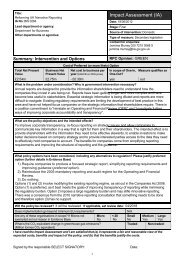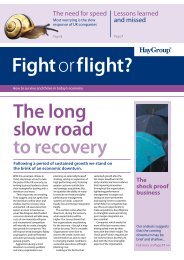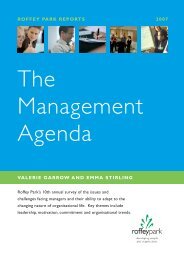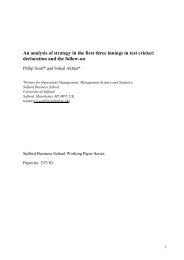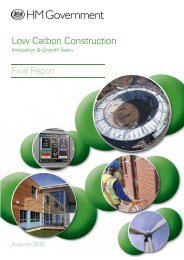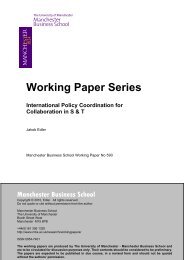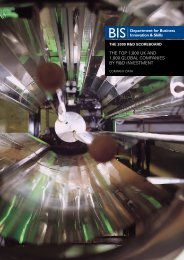Research Paper - Management and Business Studies Portal
Research Paper - Management and Business Studies Portal
Research Paper - Management and Business Studies Portal
You also want an ePaper? Increase the reach of your titles
YUMPU automatically turns print PDFs into web optimized ePapers that Google loves.
Among the union representatives I interviewed, all agreed that the statute had beenquite effective in gaining back union recognition where it had been increasingly lostsince the 1980s. A number of unions had been heavily “derecognized” in the pastdecade, after highly publicized industrial disputes. For these unions, in particular, the“shadow” effect of the new law has been very real. Even though the unions wereofficially recognized, union membership stayed high at many workplaces. Where theunions have retained strong membership, the new statute has allowed them to onceagain approach previously unionized employers for voluntary recognition. In the threeyears since the start of the statutory operation, these officials suggested that it wasbecoming the st<strong>and</strong>ard practice to informally work out voluntary recognitionagreements, especially as the intricacies <strong>and</strong> difficulties of the statutory process areincreasingly apparent.However, the union representatives underscored the significance of the Acas role toinformally conduct membership counts <strong>and</strong> worker ballots. To agree to voluntaryrecognition, employers insist on worker majority support, much as required bystatute. To avoid CAC process, the Acas procedures for determining worker consensusoffer a practical alternative frequently used by unions <strong>and</strong> employers before voluntaryrecognition is agreed.<strong>Research</strong> by Robert Poole of Warwick University published in April 2003 offeredadditional support for the effects of such incentives on employers. xviii In his study, hecompared the attitudes of employers who completed the m<strong>and</strong>atory CAC process withthose of employers who opted out of the formal process only after the union appliedfor recognition. Among the employers who withdrew from the statutory process toagree to recognition, the three most significant factors for such action were: (1) thatthe employer had no choice legally, (2) that the employer wanted to retain flexibilityover the recognition agreement, <strong>and</strong> (3) that the employer believed that the outcomewas inevitable anyway. Thus, as suggested also by the union officials in myinterviews, it would appear that these employers have been strongly influenced bystatutory incentives to avoid the formal process.5.2.1 Minimum Negotiation St<strong>and</strong>ards Set by Statutory BargainingProcedures ModelAfter imposing m<strong>and</strong>atory recognition, the CAC retains authority to monitor thecollective negotiations <strong>and</strong> statutory provisions specify certain actions that remain tobe completed by the parties. Principally, the union <strong>and</strong> the employer must agree to aprocedural agreement (a method of collective bargaining) within thirty days. The CACprocedures include:• Within thirty days, the parties must agree to a method of collective bargaining; ifnot, either party may request further assistance from the CAC.• If the parties cannot agree to a method of bargaining, the CAC may impose amodel agreement (a statutory “default” method that is part of the statute).• While the model method of bargaining provides explicit instructions on how toconduct collective bargaining, it only requires that parties negotiate over pay,hours, <strong>and</strong> holidays.In my questionnaire <strong>and</strong> interviews with union officials, I asked how useful they foundthe procedures requiring procedural agreement. Table 7 below shows the how theunion officials viewed the effectiveness of the statutory model for bargainingprocedures.13




